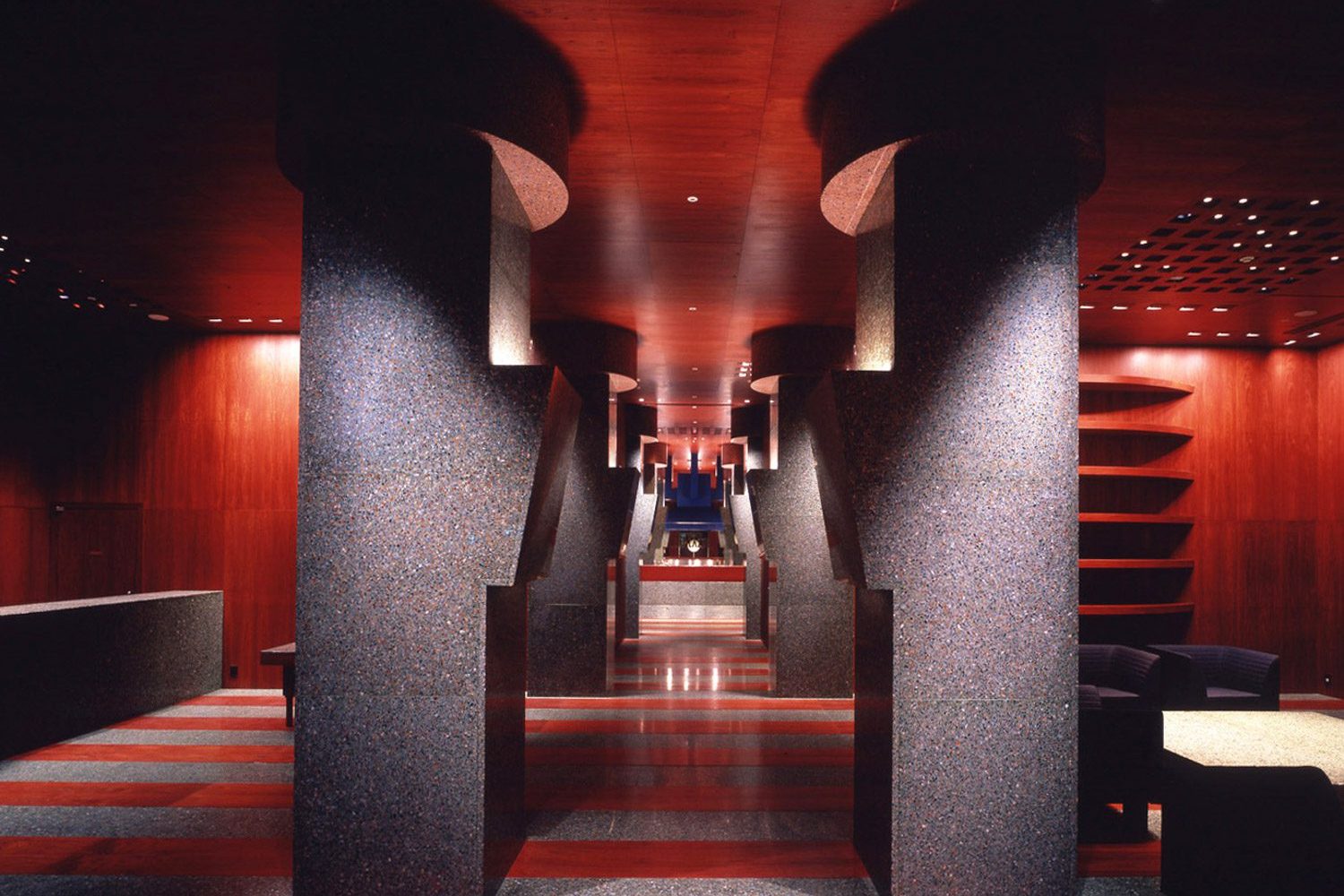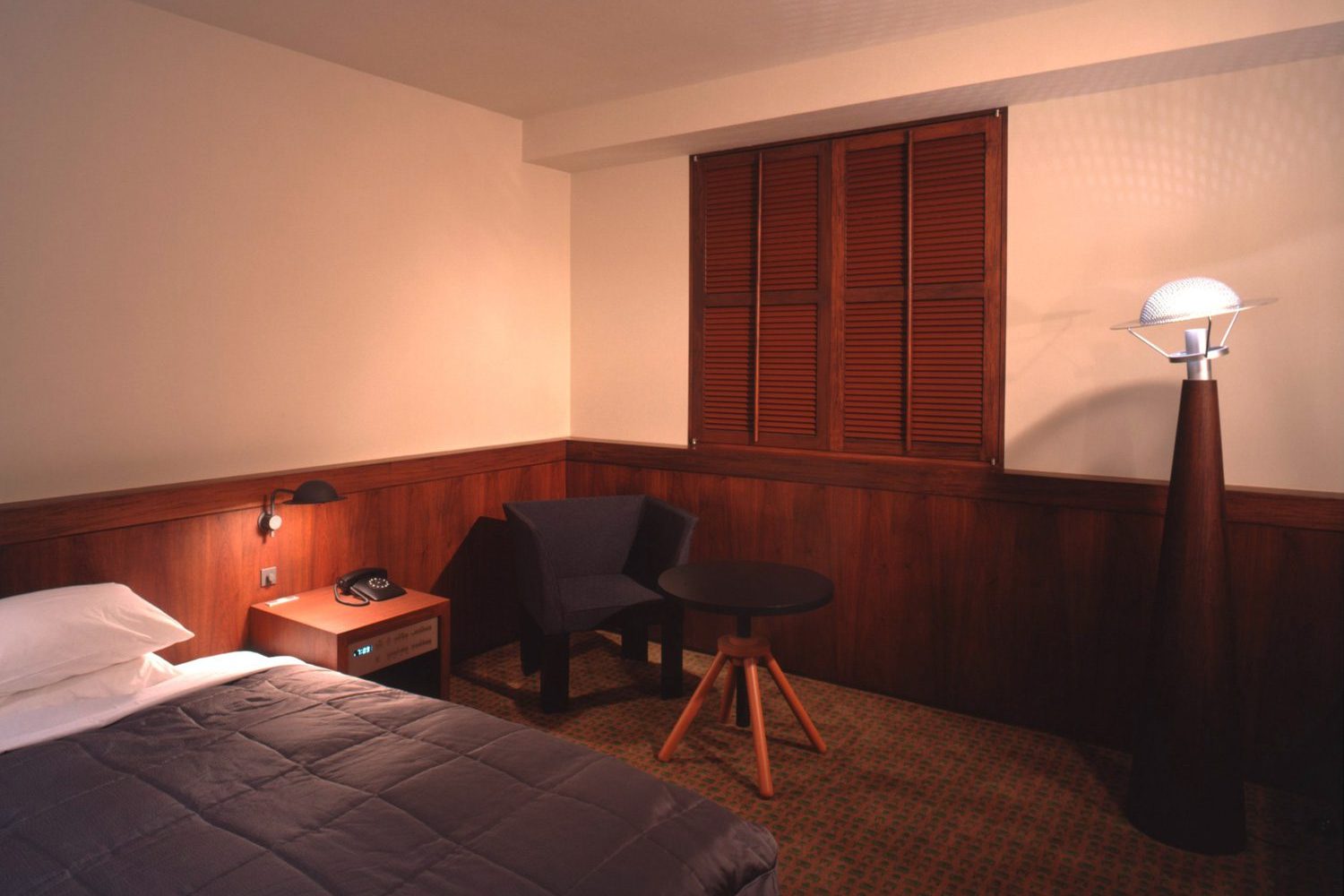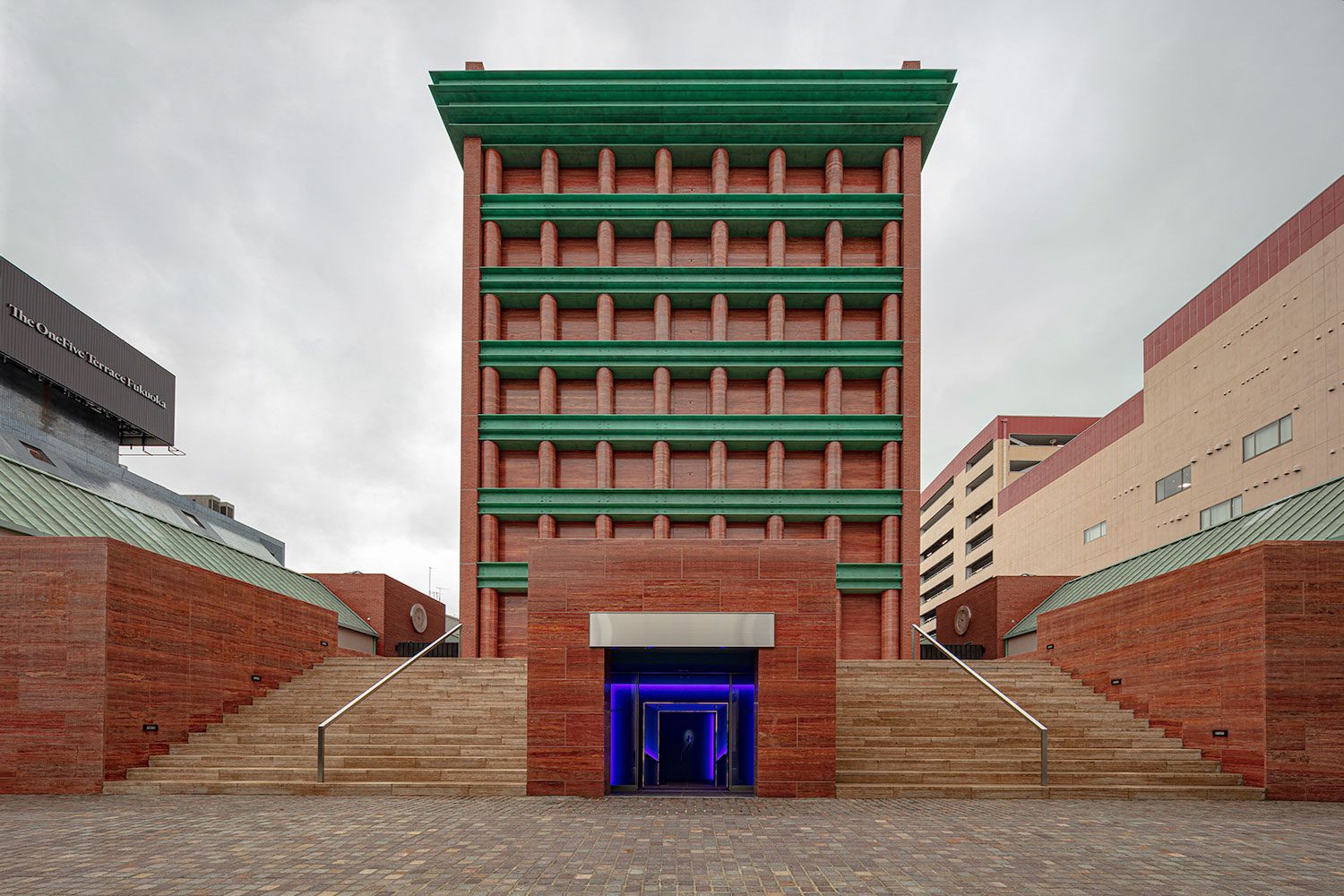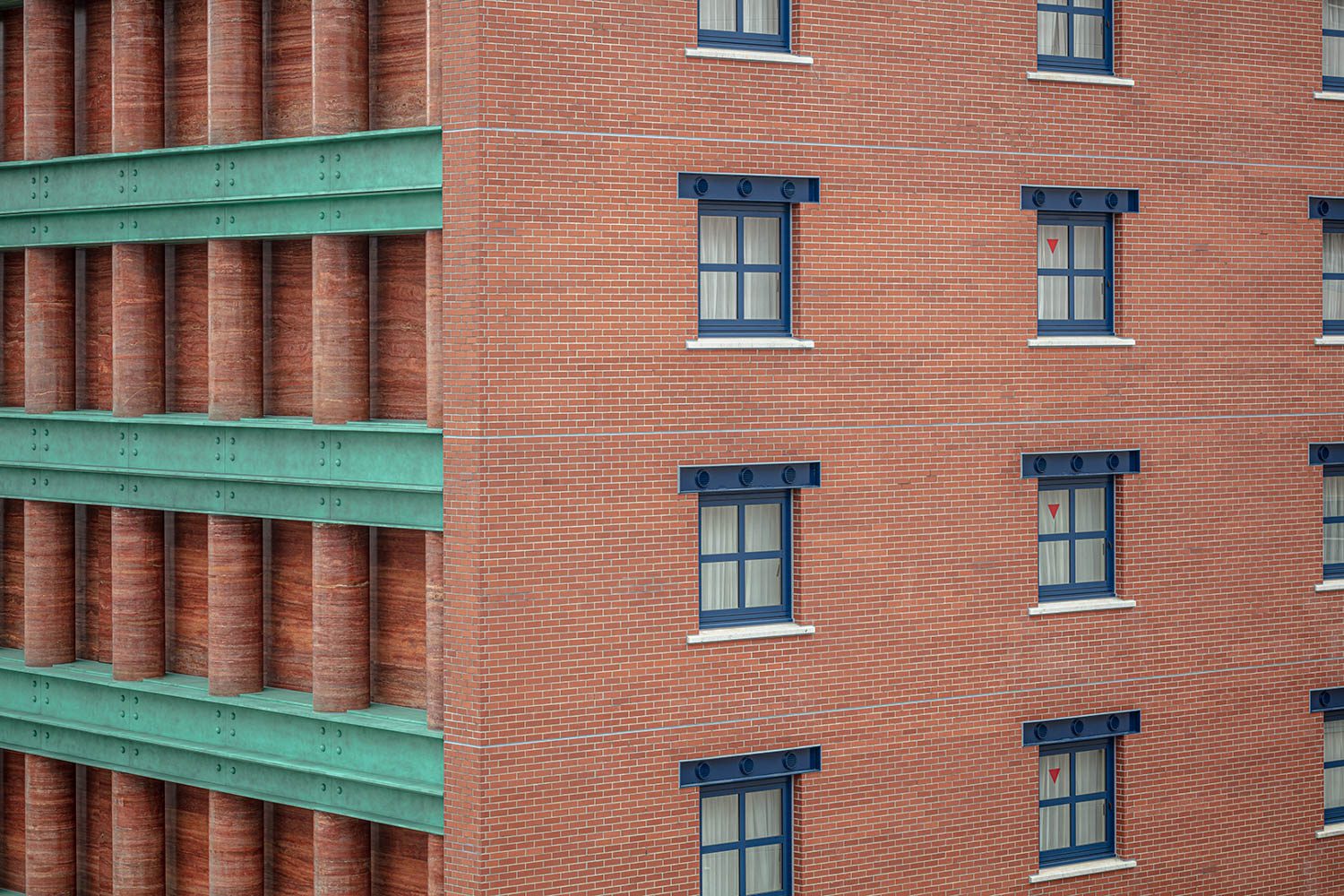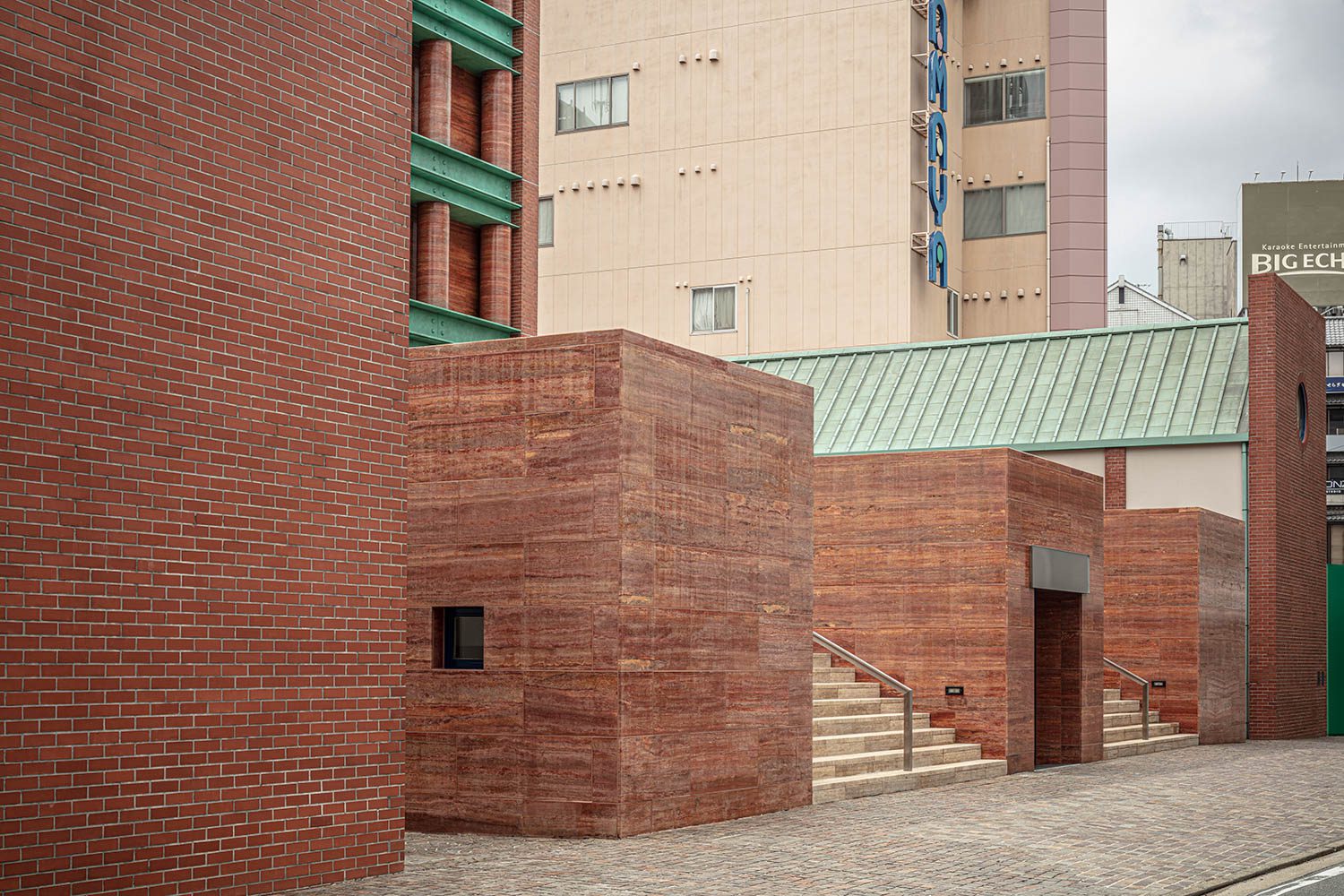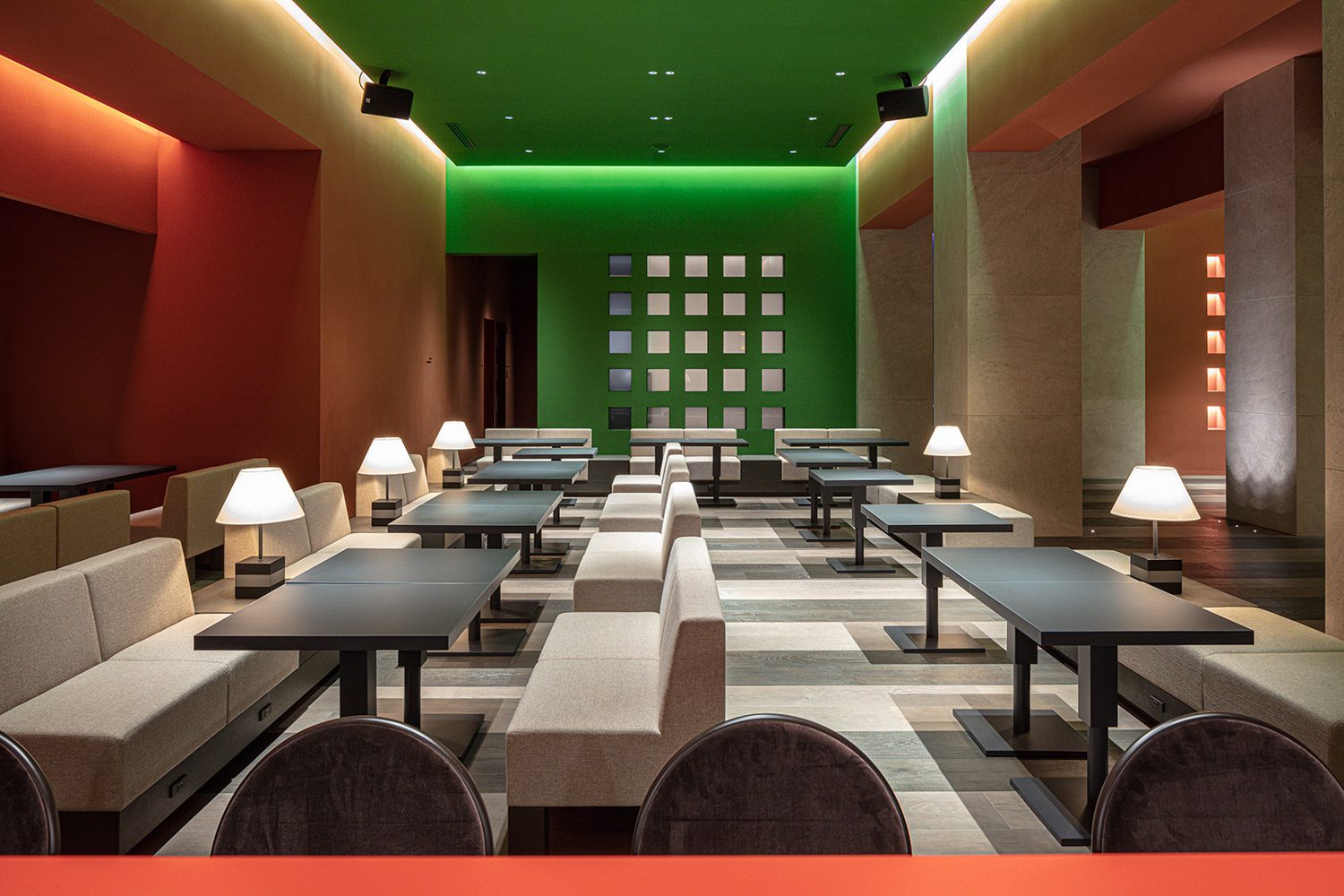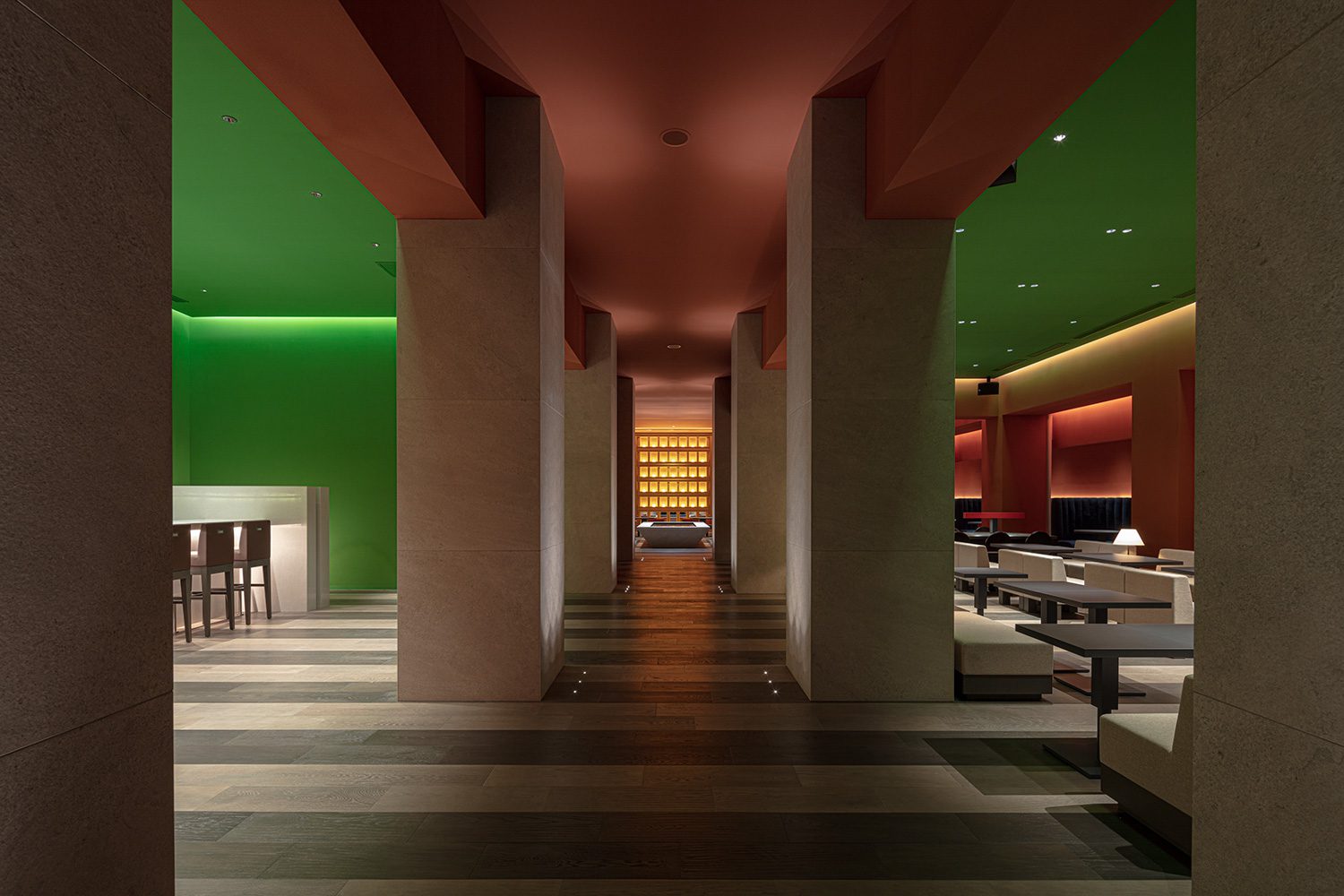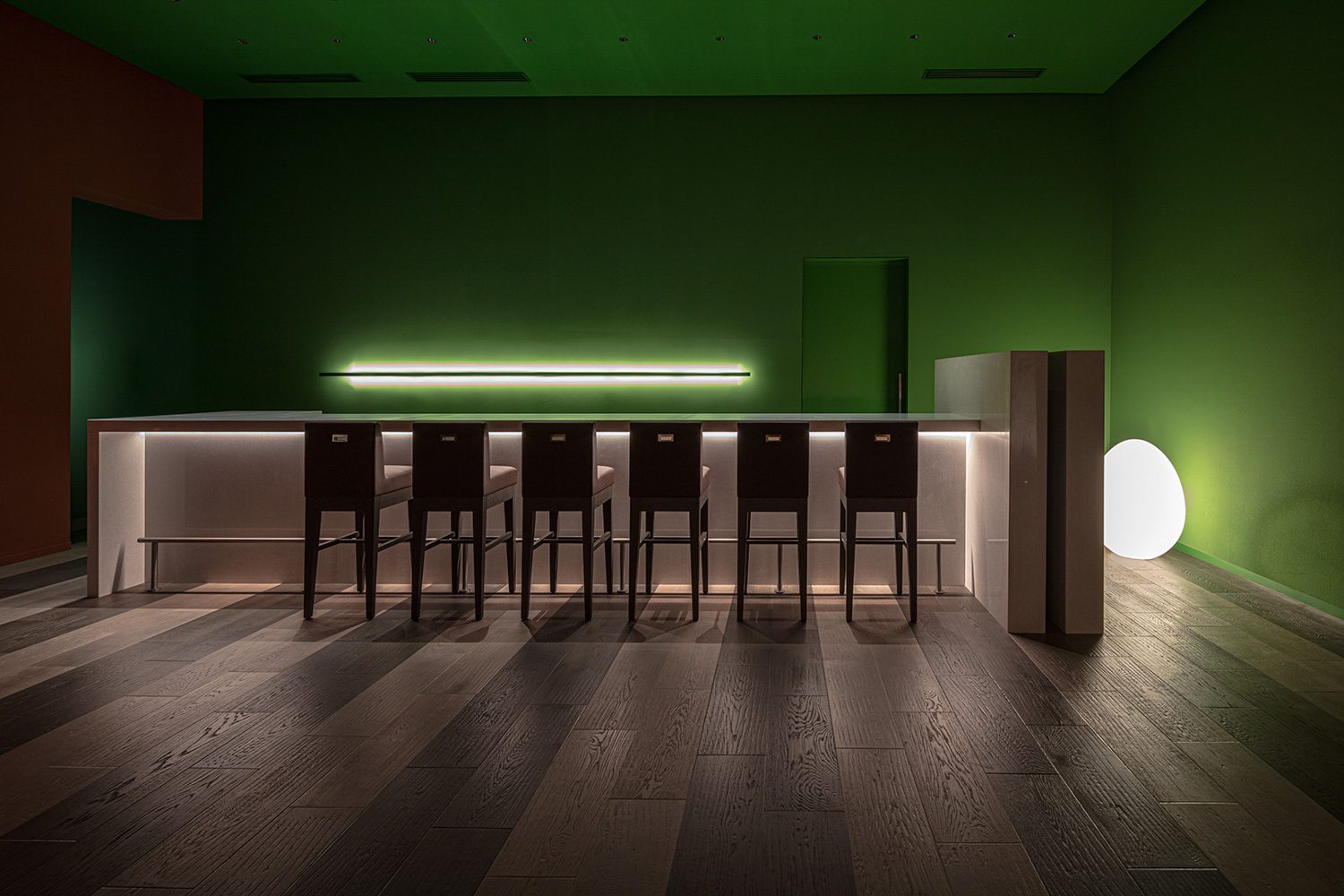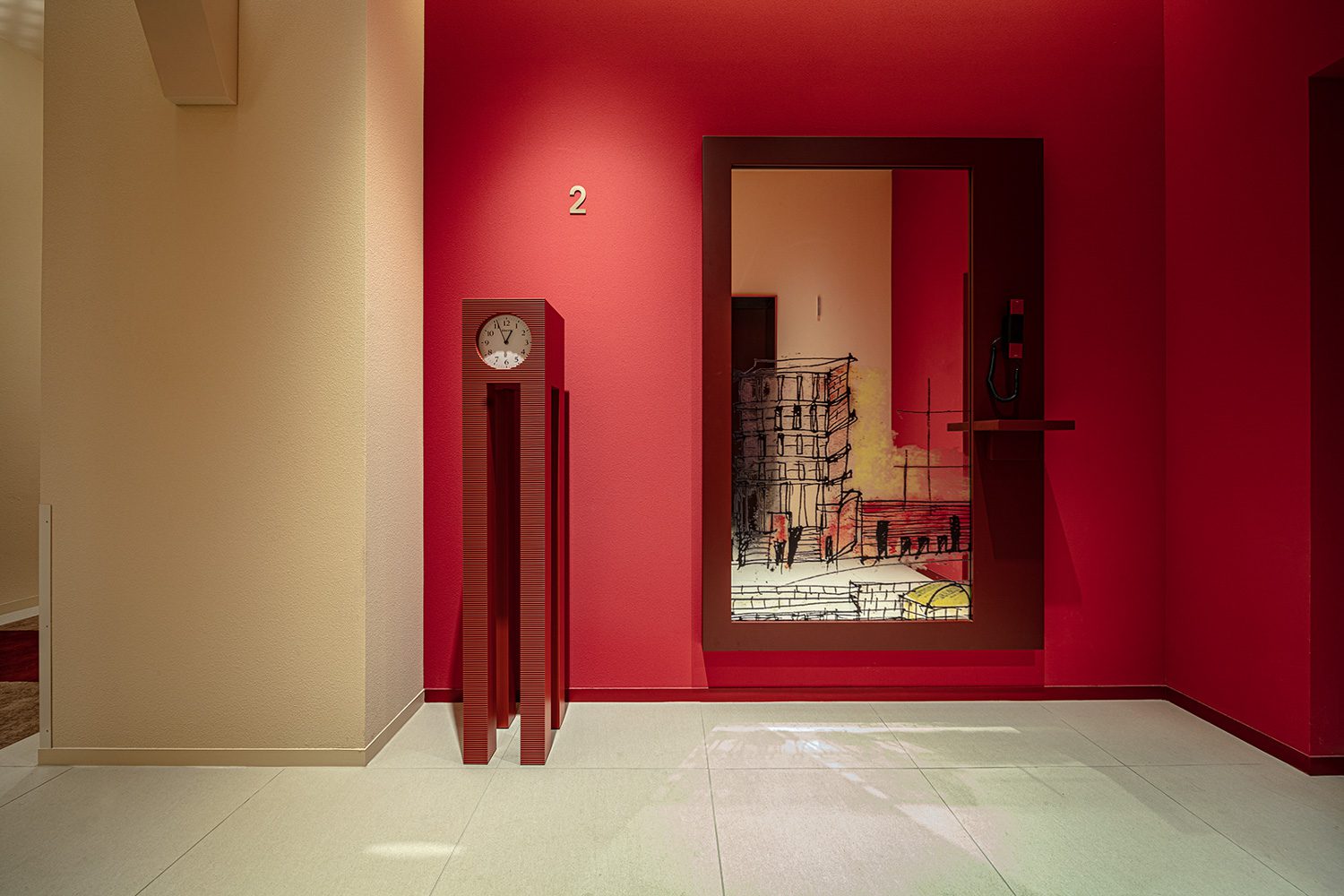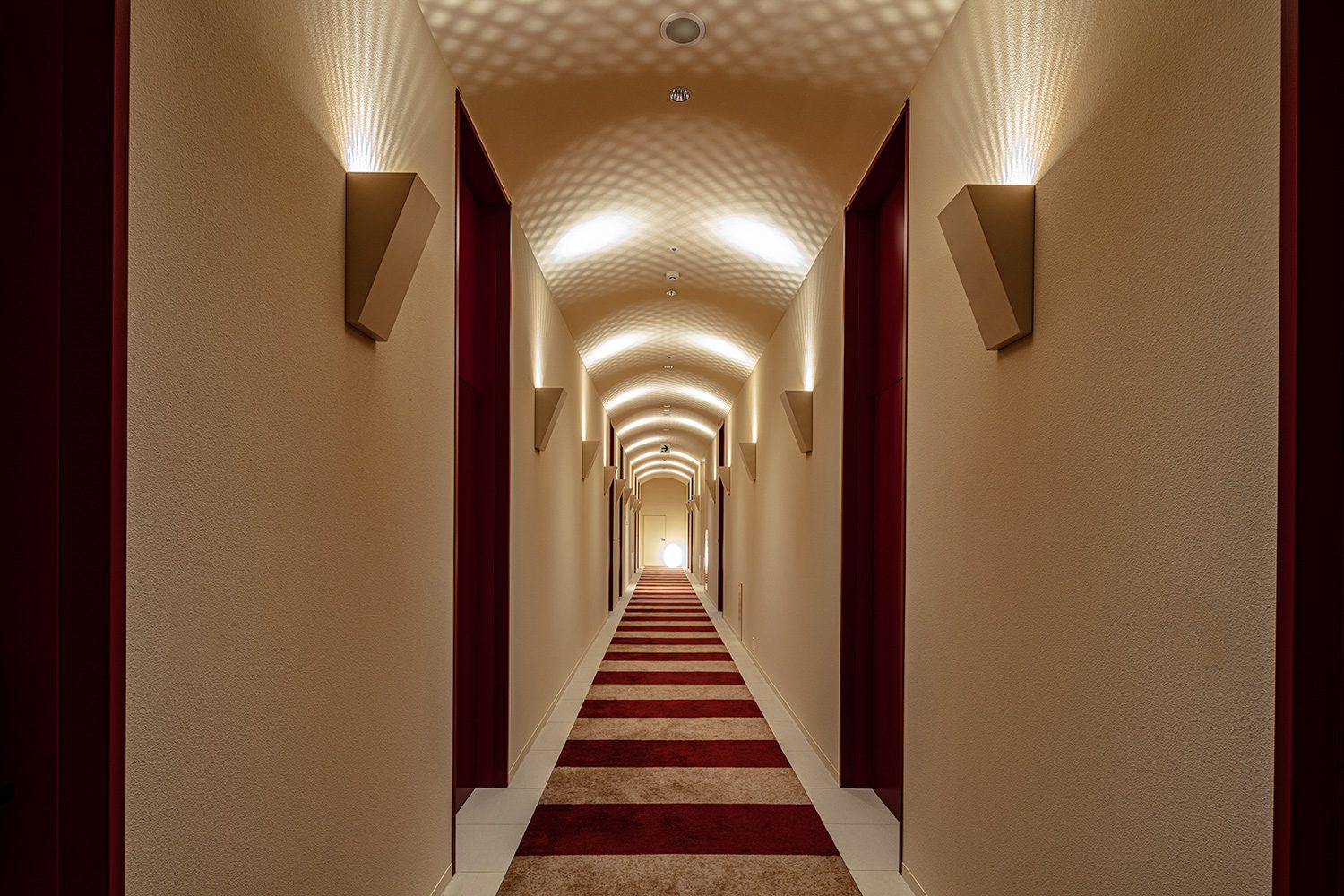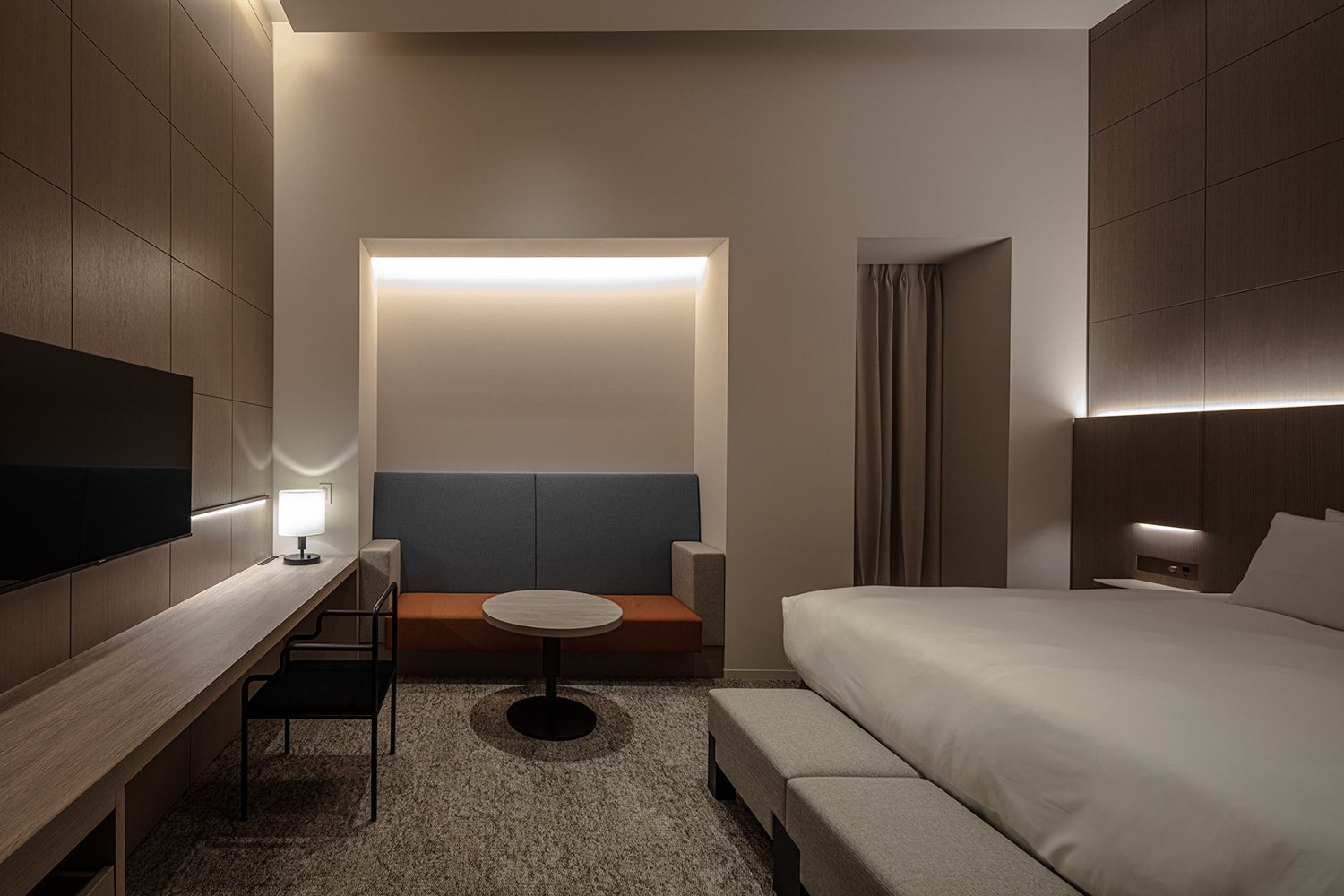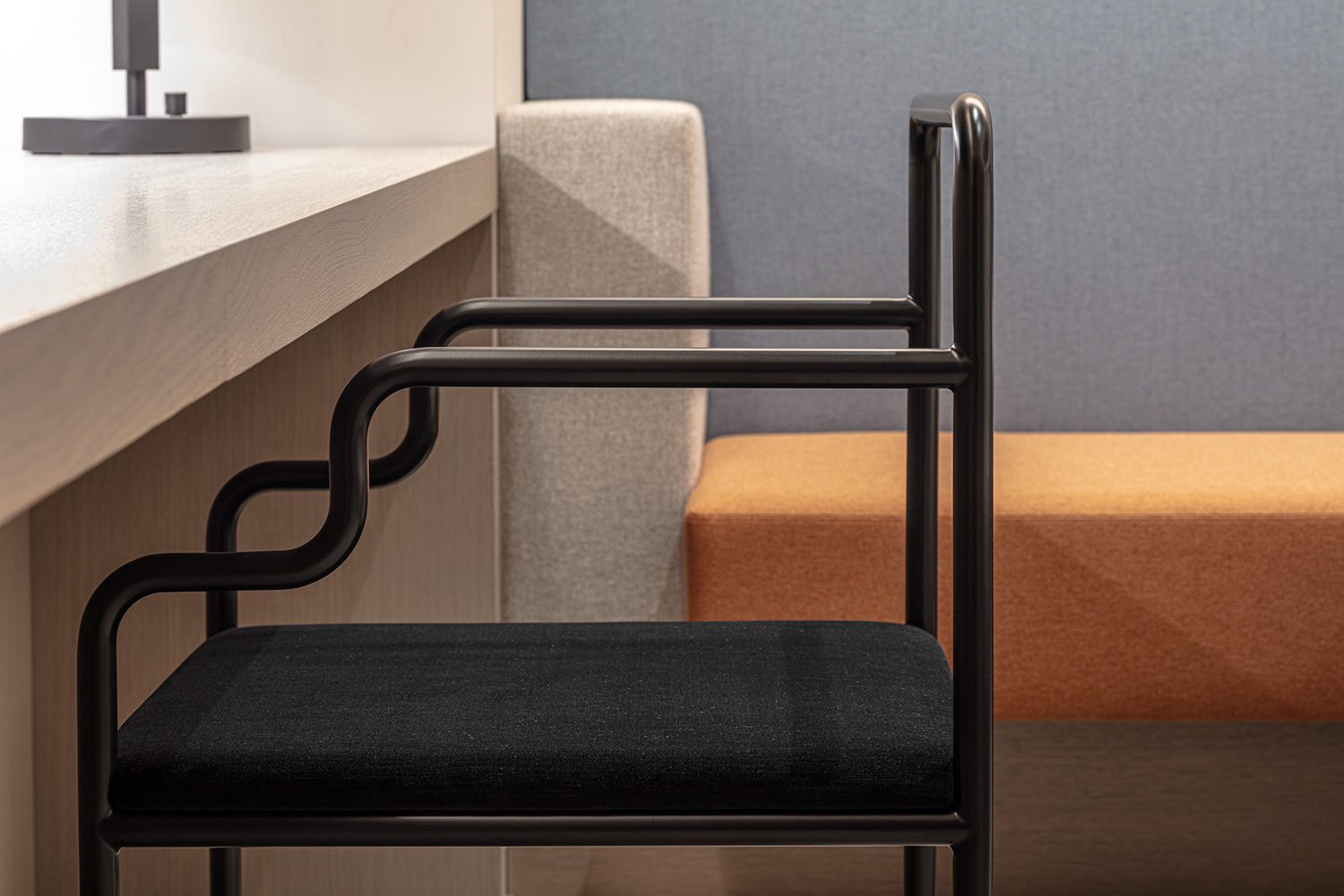UCHIDA DESIGN CARRIED FORWARD THE VISIONS OF ALDO ROSSI AND SHIGERU UCHIDA FOR THE RENOVATION OF IL PALAZZO, PRESENTING THE WORKS OF THESE TWO MASTERS AS TIMELESS AND TRANSCENDING ERAS
TEXT: MONGKON PONGANUTREE
PHOTO CREDIT AS NOTED
(For Thai, press here)
October 2024 marks a significant milestone for Il Palazzo Hotel in Fukuoka, Japan. Not only does it celebrate one year since its grand reopening after extensive renovations, but it also commemorates 35 years since its original completion in 1989. Being referred to as Japan’s first boutique hotel, Il Palazzo is one of the most prominent works of Aldo Rossi, one of the most esteemed Italian architects of the postmodern era.
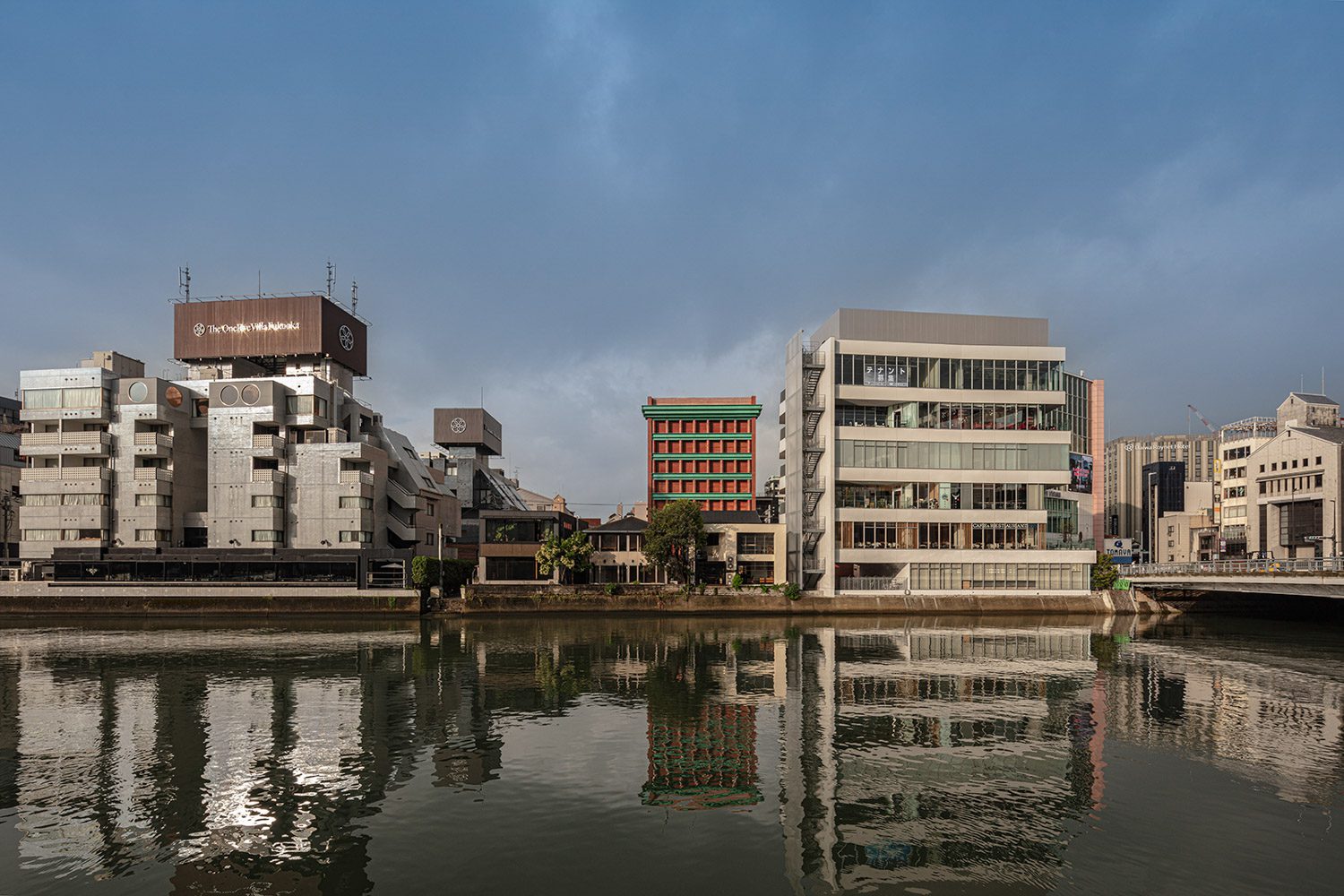
Photo: Satoshi Asakawa
Aldo Rossi first garnered international acclaim for his ideas in architecture and urban design. His seminal book, ‘The Architecture of the City,’ published in 1966 when he was 35, critiqued Modernist architecture, which often focused on functional and abstract principles, sometimes neglecting historical context and continuity. Rossi introduced the concept of the city as a composition of ‘Urban Artifacts’—physical elements of significant value, whether architectural forms or spaces, that are collectively built upon the past and continuously evolve. He emphasized the importance of understanding and preserving the historical essence of cities, arguing that architecture should respond to these contexts rather than introducing entirely new forms devoid of historical reference.
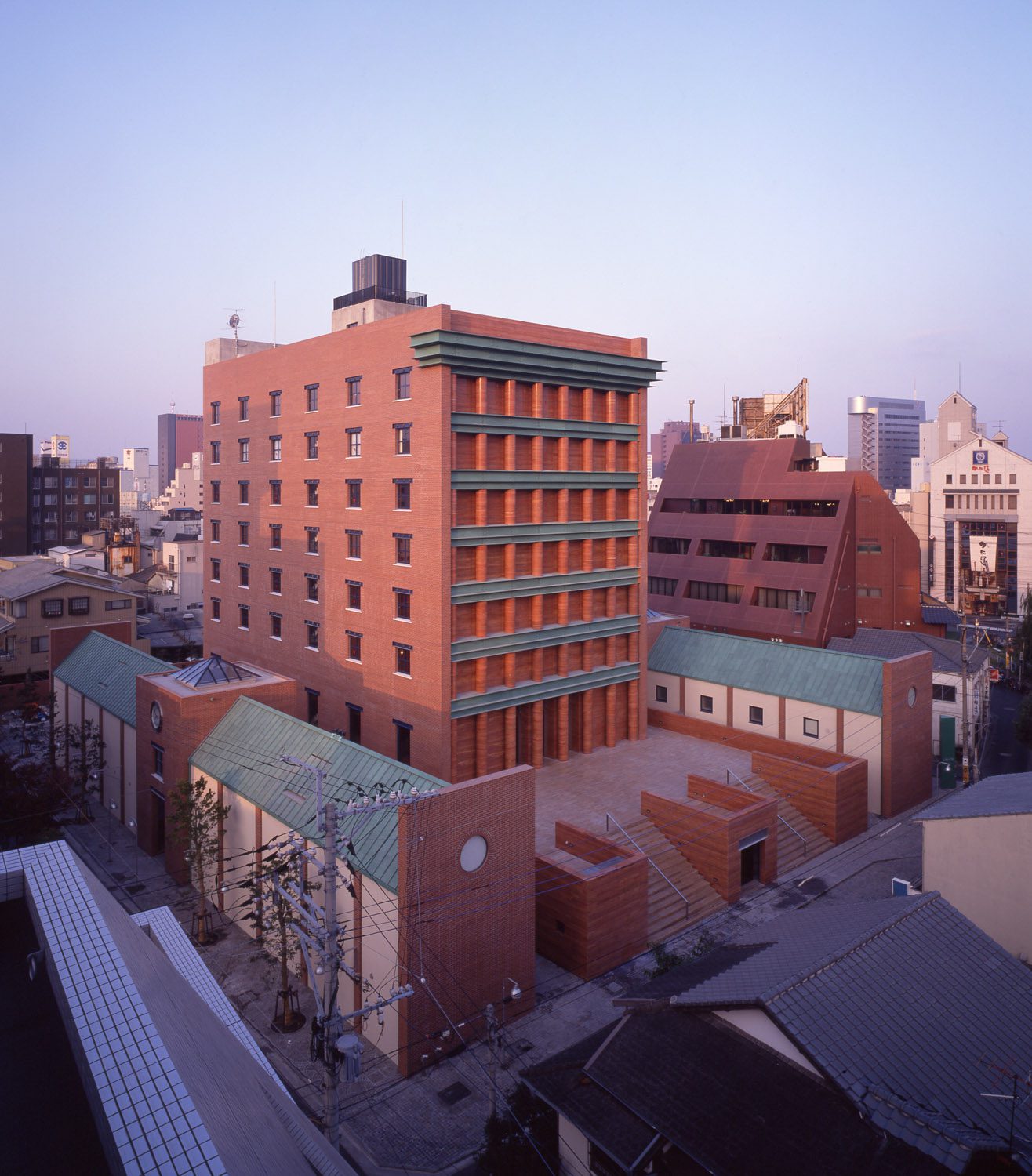
Photo: Nacása & Partners Inc
Central to Rossi’s philosophy was the principle of historical reference. To Rossi, architectural language should incorporate elements and forms that reference significant structures from the past, stressing the relationship between architecture and its urban or site-specific setting. Through symbolic elements, Rossi sought to convey meaning and leave lasting impressions. He believed that Urban Artifacts are vital to a city’s fabric because they embody the collective memory shared by its inhabitants. Yet even if the function or the meaning of a monument changes over time, the image remains. It enters the collective memory of Urban Artifacts.
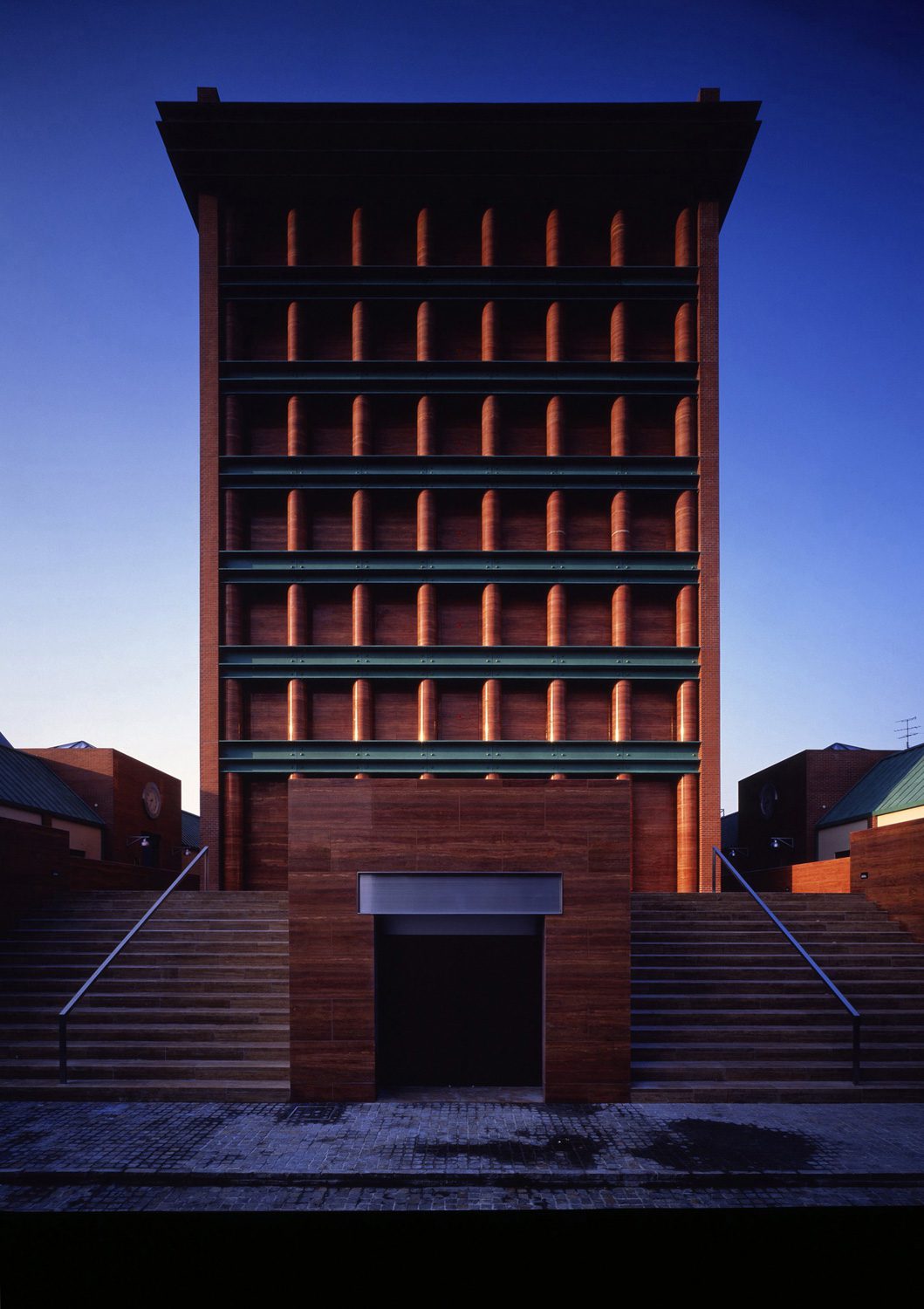
Photo: Nacása & Partners Inc
In 1986, renowned Japanese designer Shigeru Uchida was commissioned to design a 60-room hotel in Fukuoka. Recognizing the project’s potential, he invited Rossi to take on the architectural design while Uchida himself focused on the interiors. In 1987, Rossi visited the site, dedicating considerable time to meticulously studying the environment and its context—a reflection of his commitment to integrating architecture with the city in line with his conceptual approach.
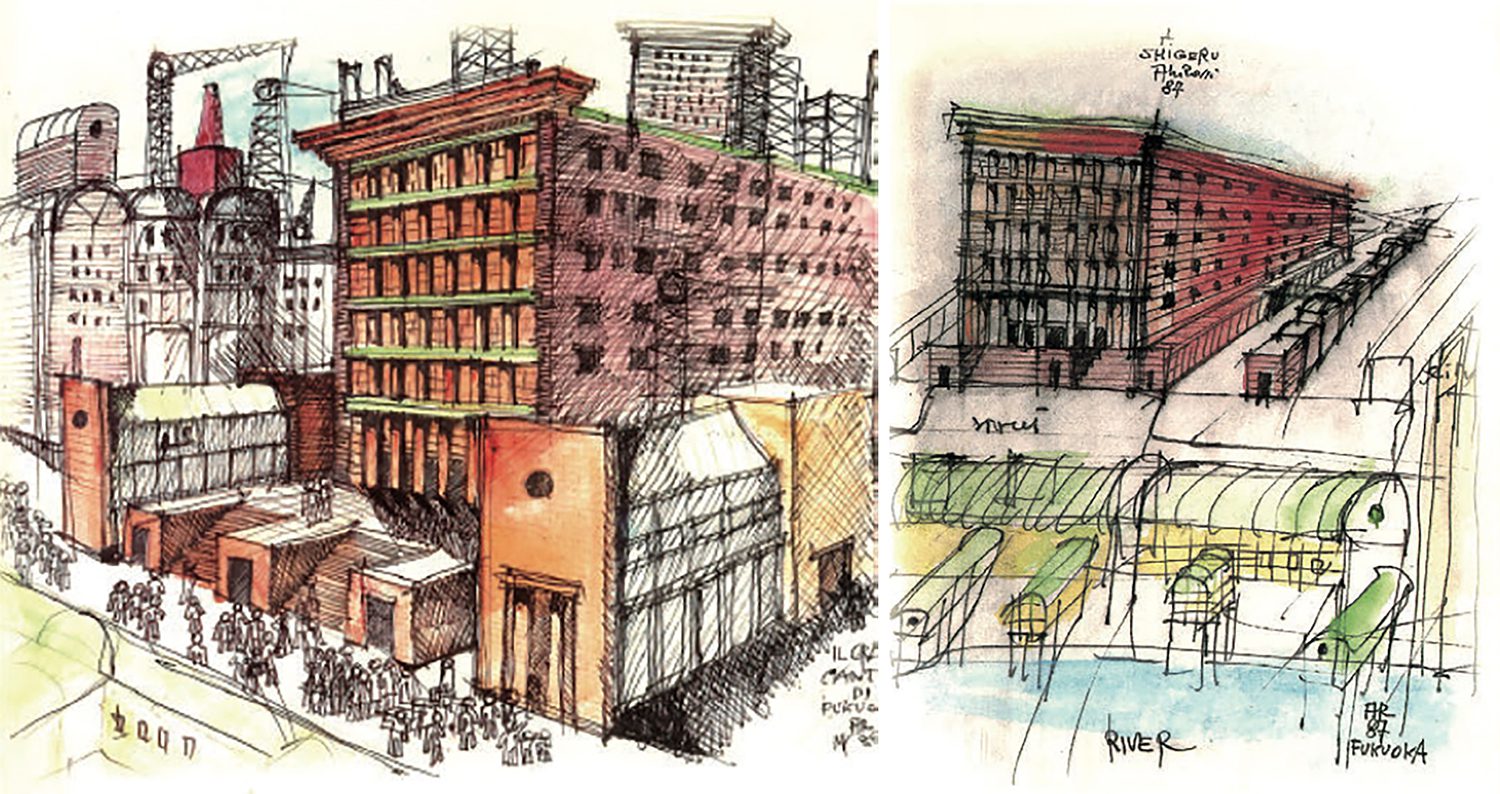
In his initial design sketches, Aldo Rossi had a clear vision of forging a relationship between the building and its surrounding context. This project was an ambitious endeavor to meld Eastern and Western spirits into a harmonious whole. The building itself is distinctive, incorporating elements of classical architectural language. Rossi drew inspiration from the palazzos of Venice, Italy, and the traditional temple of Kyoto, Japan. The exterior materials feature red marble juxtaposed with oxidized green copper used as lintels, horizontal elements ascending to the building’s crown. The placement of the structures on the site includes the main building—the palazzo—which resembles a majestic castle. Access is thoughtfully orchestrated through two low-rise commercial buildings flanking either side, designed as simple gabled forms that appear smaller in size than the primary edifice. Together, these three components embrace a public space reminiscent of a piazza. Rossi endeavored to blur the boundaries between public areas and the project’s private spaces, aiming to create a vibrant environment in line with his belief that architecture should foster shared human experiences. This concept is reflected in creating a large, open public space. In his original sketches, Rossi even proposed a connection from the hotel to the banks of the Naka River situated behind the site—all to promote the idea of architecture as a small city.
Following a change in the hotel’s ownership, Uchida Design Studio—founded by Shigeru Uchida—was commissioned by the new proprietors in 2021 to undertake significant renovations of Il Palazzo. The design team at Uchida Design sought to carry forward the visions of Rossi and Uchida, who had passed away in 2006 and 2016, respectively, while refreshing the design to present the works of these two masters as timeless and transcending eras. The interior design retained the building’s original three primary color schemes—red, green, and blue—but adjusted the tones to appear more contemporary. Special attention was also given to lighting design, which became another crucial element in this renovation.
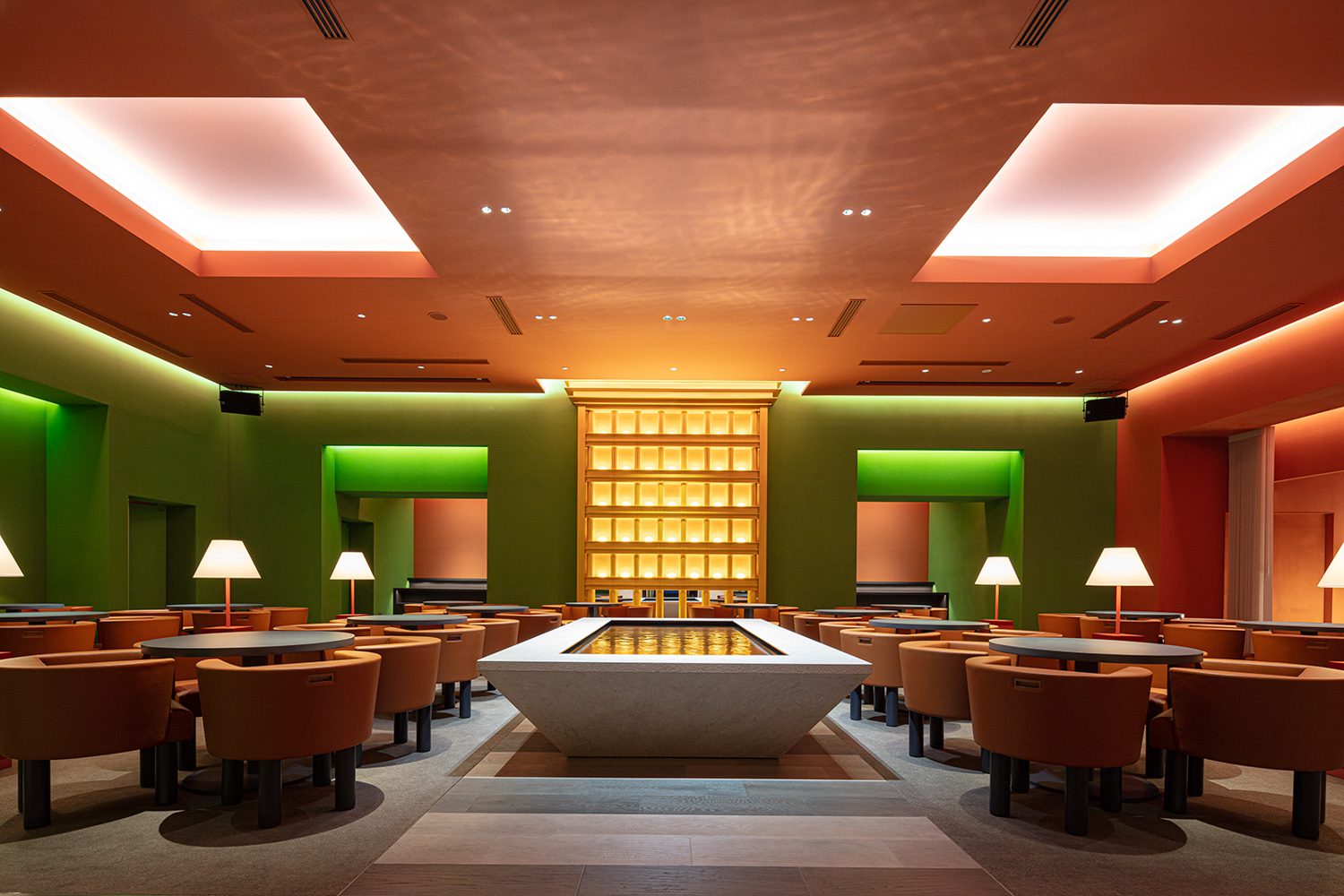
Photo: Satoshi Asakawa
One of the most significant transformations in the recent renovations at Il Palazzo is the reimagined entrance. Previously welcoming guests through the front plaza, the new entrance now connects directly at street level, leading visitors through a tunnel bathed in dramatic, deep blue light—a homage to its past life as a dance bar entrance. This renovation extends into the interiors, where the lobby, restaurant, and various service areas sport a rejuvenated, contemporary flair, yet remain true to the foundational designs established by Aldo Rossi and Shigeru Uchida. Classic pieces of furniture by several postmodern icons are retained, merging seamlessly with Rossi’s original sketches, now adorning the corridors as poignant reminders of the hotel’s rich design heritage.
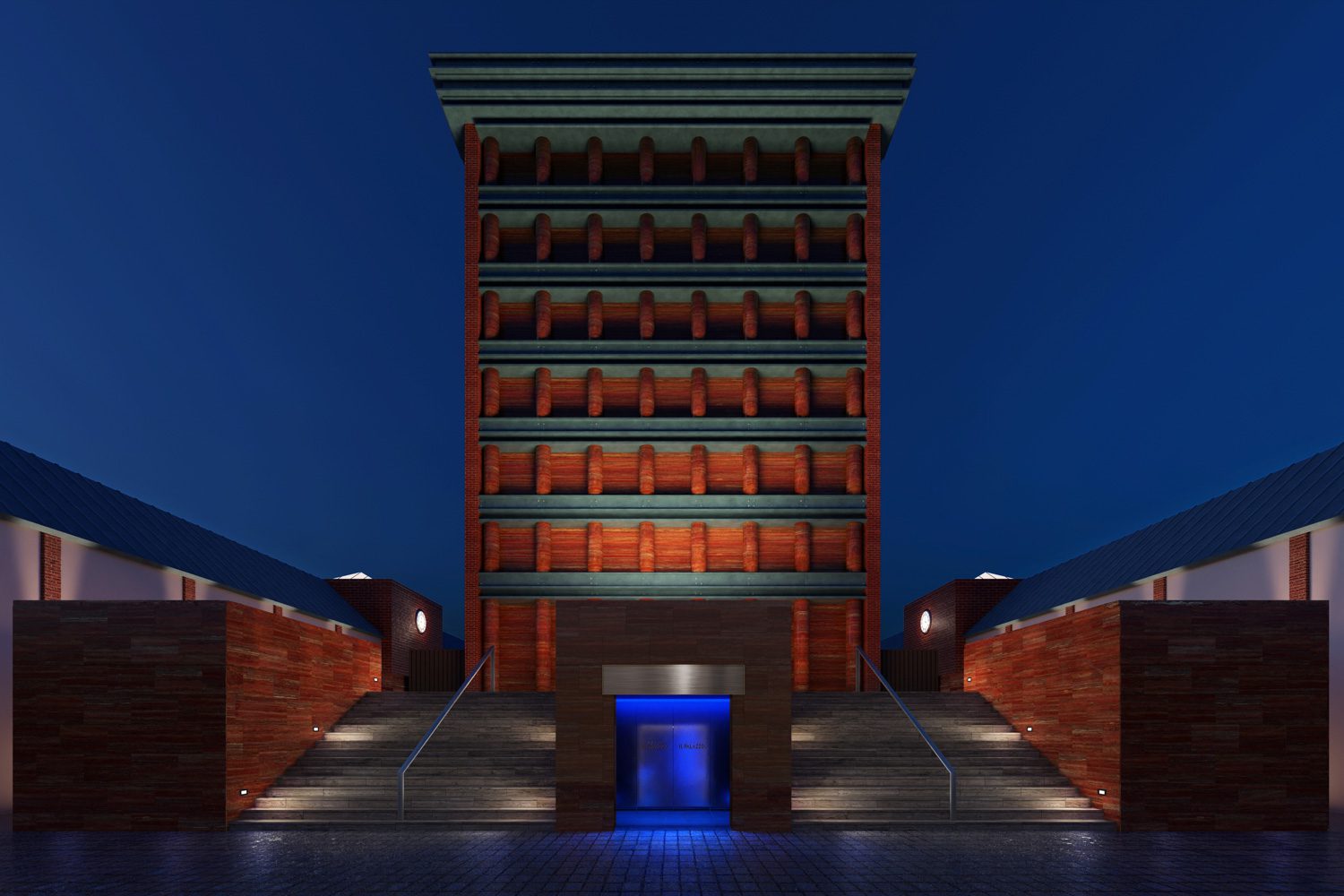
Image courtesy of Hotel Il Palazzo
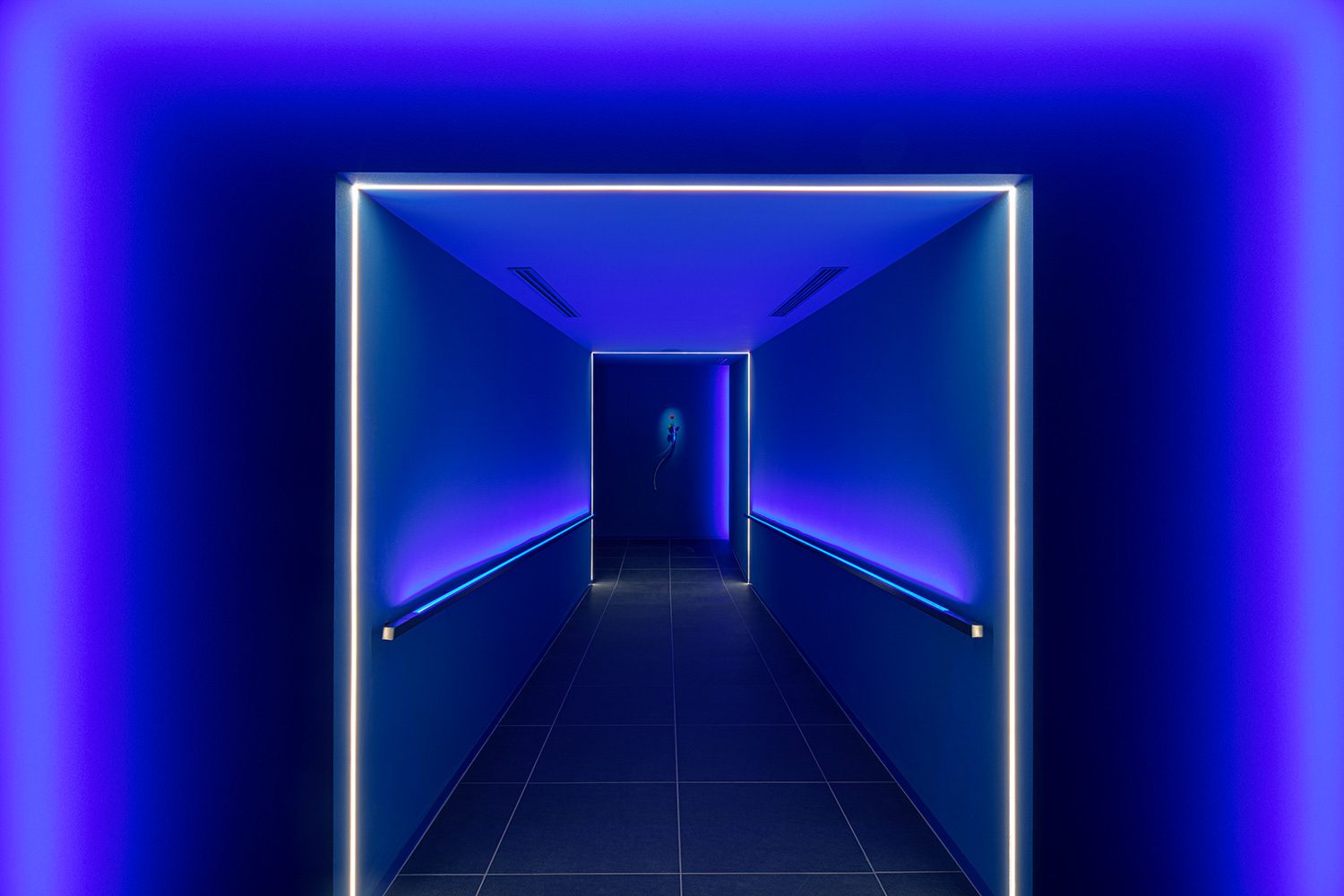
Photo: Satoshi Asakawa
Il Palazzo stands as a testament to the graceful blend of historical integrity with modern relevance. This overhaul not only aims to preserve the architectural and aesthetic visions of its originators but also adapts to the demands of the contemporary lifestyle. This careful preservation ensures that this iconic structure will remain a fixture, protected from demolition for the foreseeable future. Plans are underway to invigorate the ‘piazza’ in front of the building, potentially transforming it into a lively community hub or marketplace, true to Rossi’s vision of creating boundless, shared urban experiences. Should this vision be realized, it would mark an exciting evolution of Rossi’s architectural legacy, propelling his architectural ideas into a new level and era.
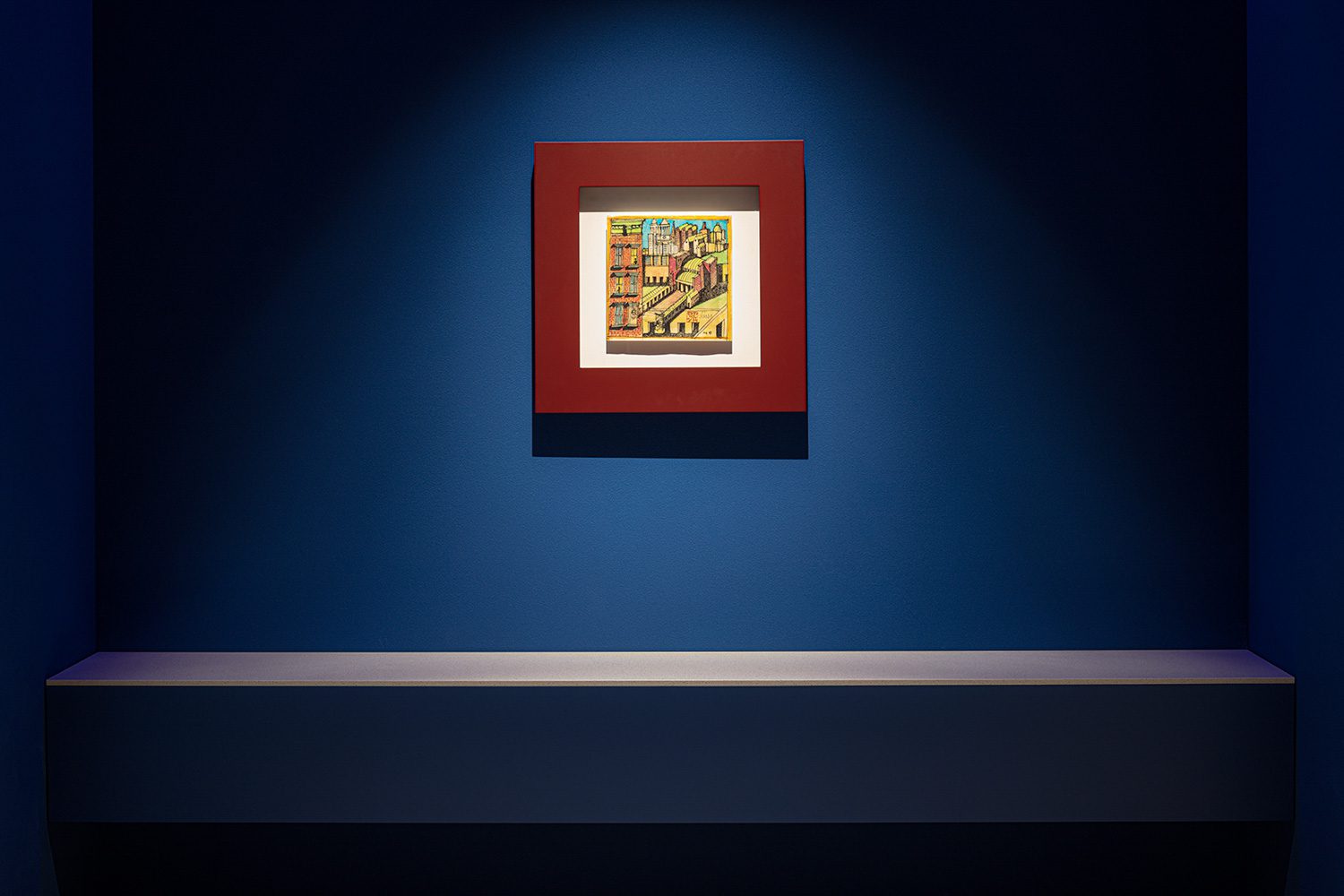
Photo: Satoshi Asakawa
“Since the architect does not choose his sites, he can build on them, but he cannot give them life. There must be a connection between the architect and the person who will experience the result of the architect’s vision.” Aldo Rossi, from Aldo Rossi – Buildings and Projects, Rizzoli 1984
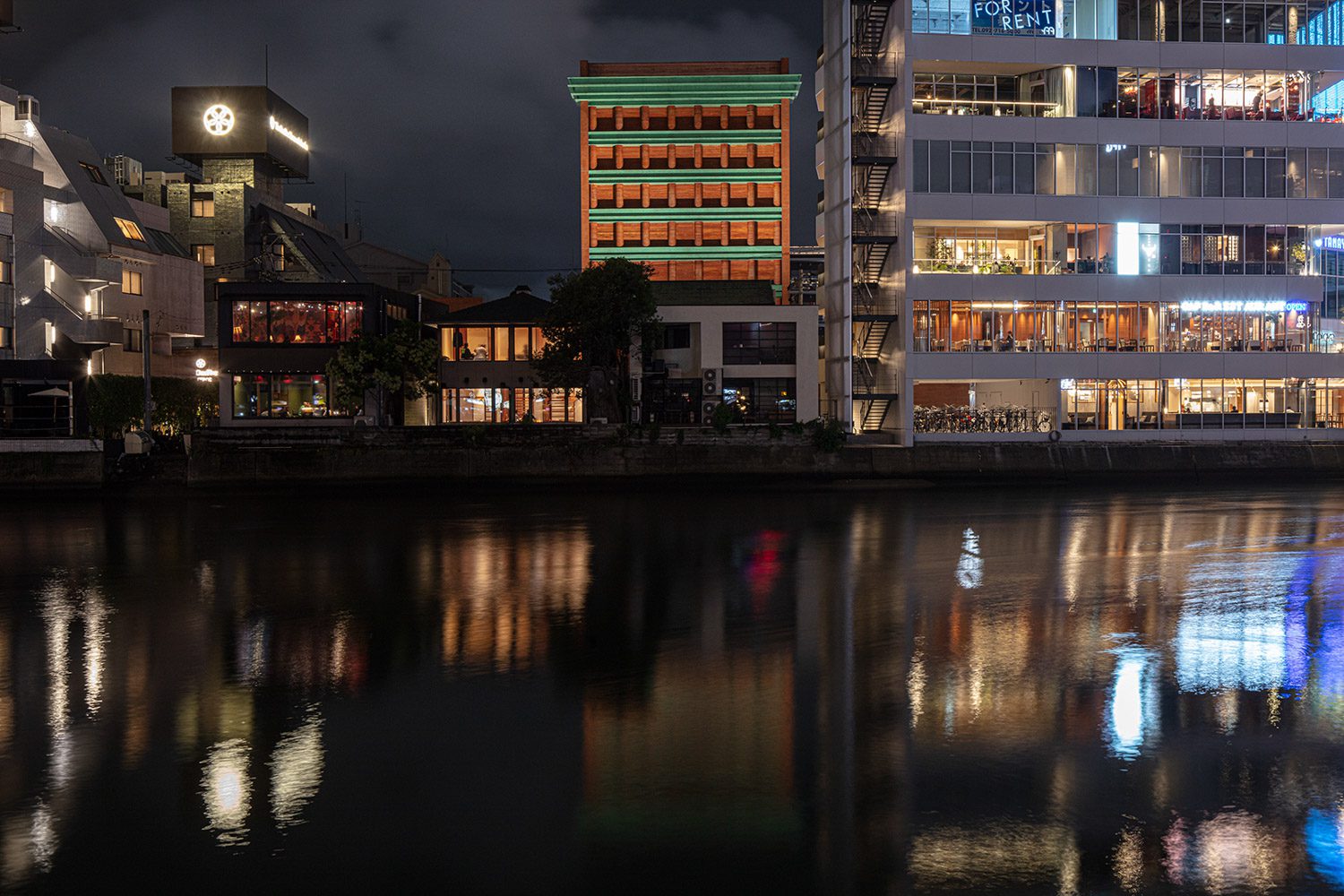
Photo: Satoshi Asakawa

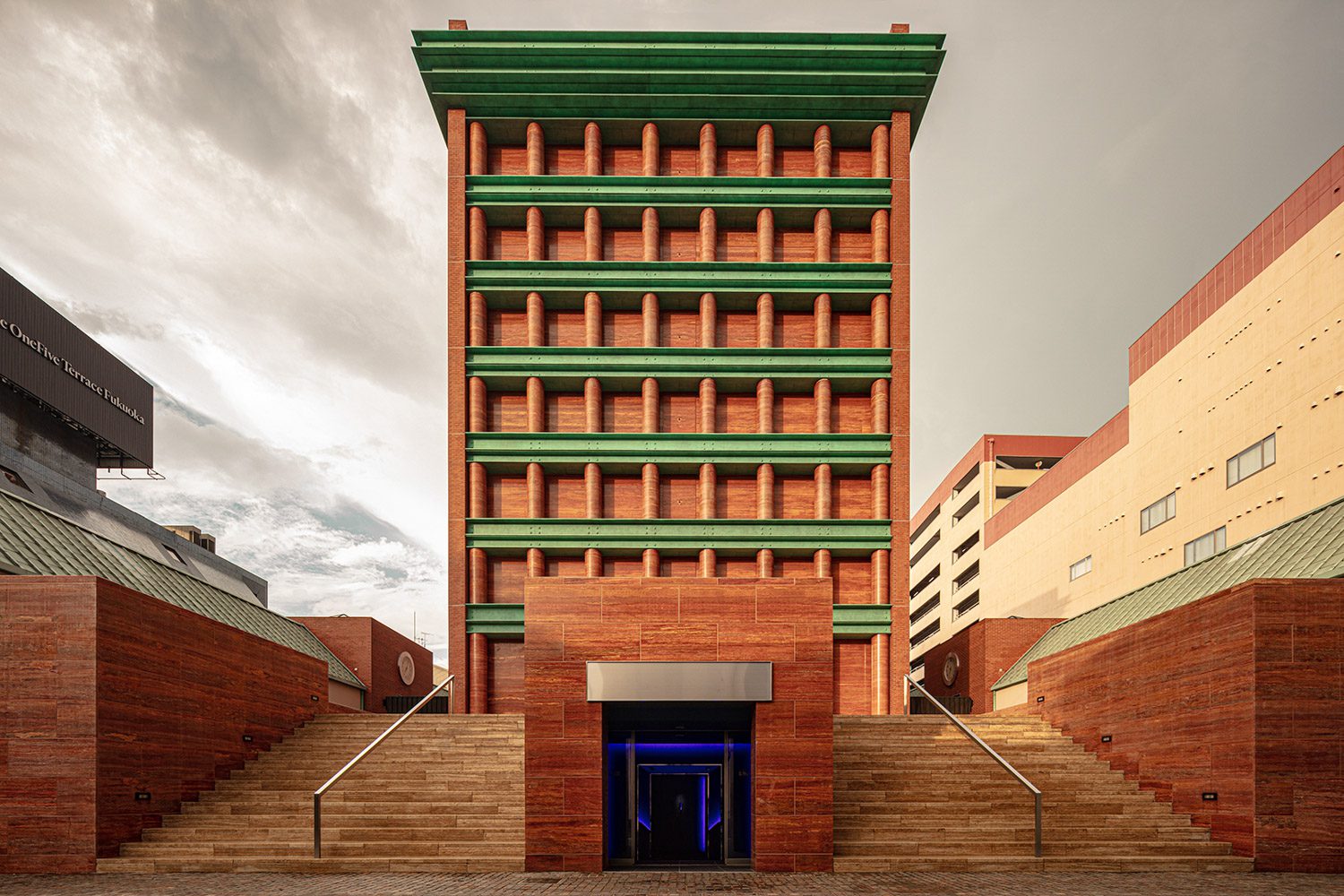 Photo: Satoshi Asakawa
Photo: Satoshi Asakawa 